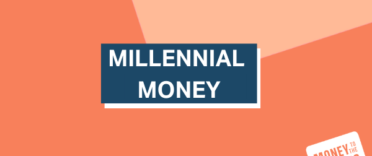In this week's millennial money episode, Money to the Masses financial expert Damien Fahy and I speak about the pros and cons of the shared ownership scheme.
Damien Says:
The Shared Ownership scheme
Who is eligible for the Shared Ownership scheme
- Buyers have to be over the age of 18
- First-time buyers
- Those who have owned a property before but do not own one now and are struggling to get back onto the property ladder
- If you are already on the shared ownership scheme you can buy another property through the scheme
- Earn a combined household income below £80,000 (£90,000 in London)
How does the Shared Ownership scheme work?
The Shared Ownership scheme (also known as Share to Buy) allows you to buy up to 75% of a property and pay rent for the remaining percentage of the property that you do not own. You can own anything from 25-75% of the property, and the percentage that you rent is generally charged at lower than market value rate.
Once you have purchased a property using the shared ownership scheme you have the ability to 'staircase', a process that allows you to buy increasing amounts of the property to ultimately own 100%. When you staircase, the additional percentage you purchase will be based on the value of the property at the time you staircase and not the original property price.
When it comes to selling the house, the Housing Association have the first refusal on the sale of the property (assuming you haven't staircased to 100%). It can therefore be a little more complicated than when if you were to sell a house that you own outright. Most shared ownership scheme's are sold on new build properties but resell's are becoming more popular as people make their move up the property ladder and onto their second home.
There are other schemes in the rest of the UK that are slightly different from the version in England, as well as schemes for those living with a disability and those over the age of 55. If you wanted to know what they are then you should look at the Money Advice Service or similar sites.
What are the pros of the shared ownership scheme?
- Buyers can get onto the property ladder with a deposit as low as 5% of the percentage share you are buying
- A lower monthly cost with subsidised rent and a lower mortgage
- Available to those who have previously owned a home (but do not now) so it isn't exclusively for first-time buyers
What are the cons of the shared ownership scheme?
- One of the biggest cons of the scheme is that it's based on leasehold. Leasehold properties are those where you actually don't own the land that their property is built on. This means that you pay service and ground rent charges for maintenance to the land that your house sits on.
- Stamp duty - you can choose to pay the full stamp duty (based on 100% of the property value) from outset. Most people choose not to and only pay stamp duty on their percentage share. If you choose to do this, then if you decide to staircase (increase your share), then stamp duty for the additional share will be based on the property value at the time.
If you have any particular burning questions or topics that you would like to be discussed, email [email protected]. Head over to our social media accounts too:
Facebook - Money to the Masses
Twitter - @money2themasses
Instagram - @moneytothemasses
Youtube - Money to the Masses
[easy-tweet tweet="Millennial Money with Damien & Lauren" user=""]



